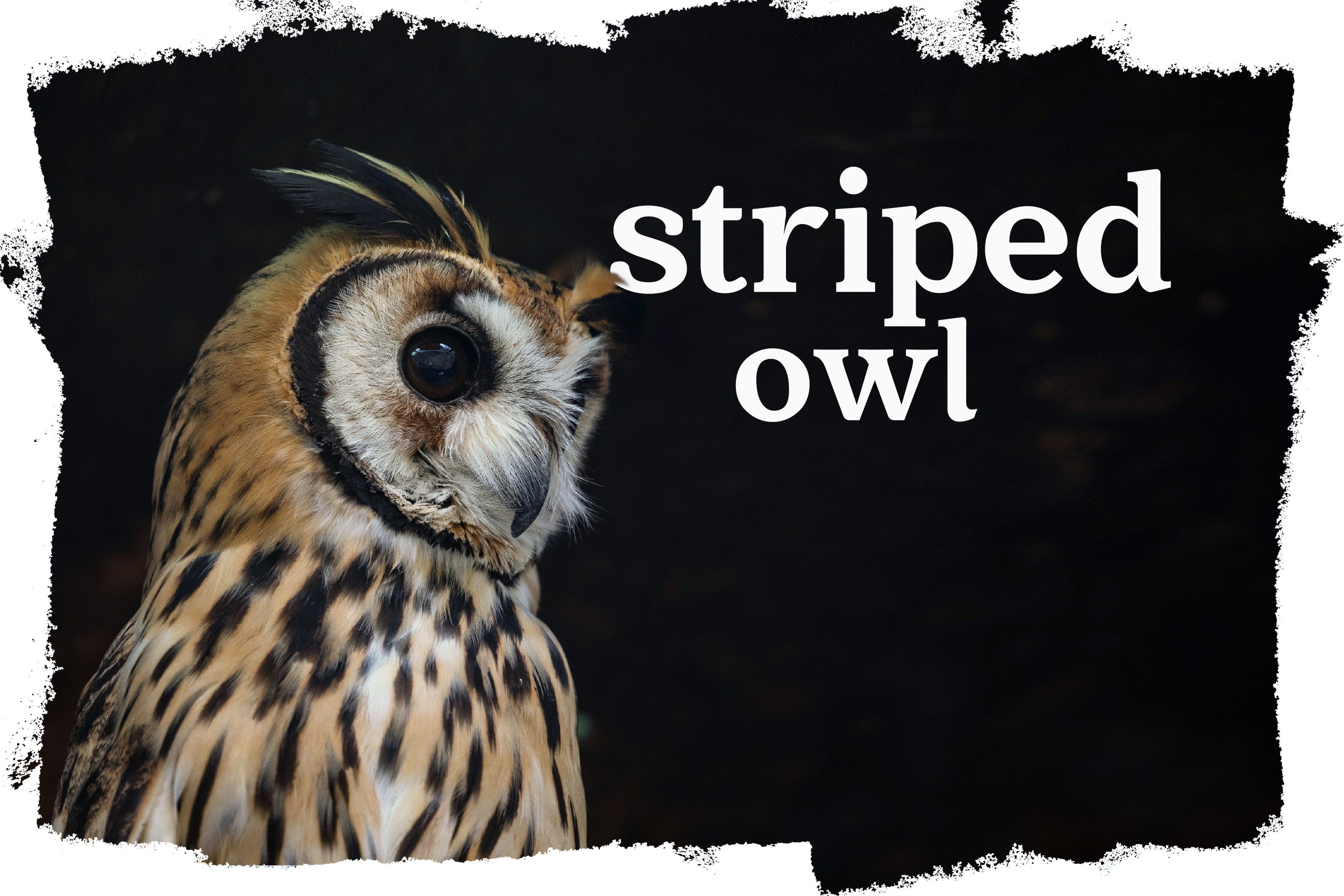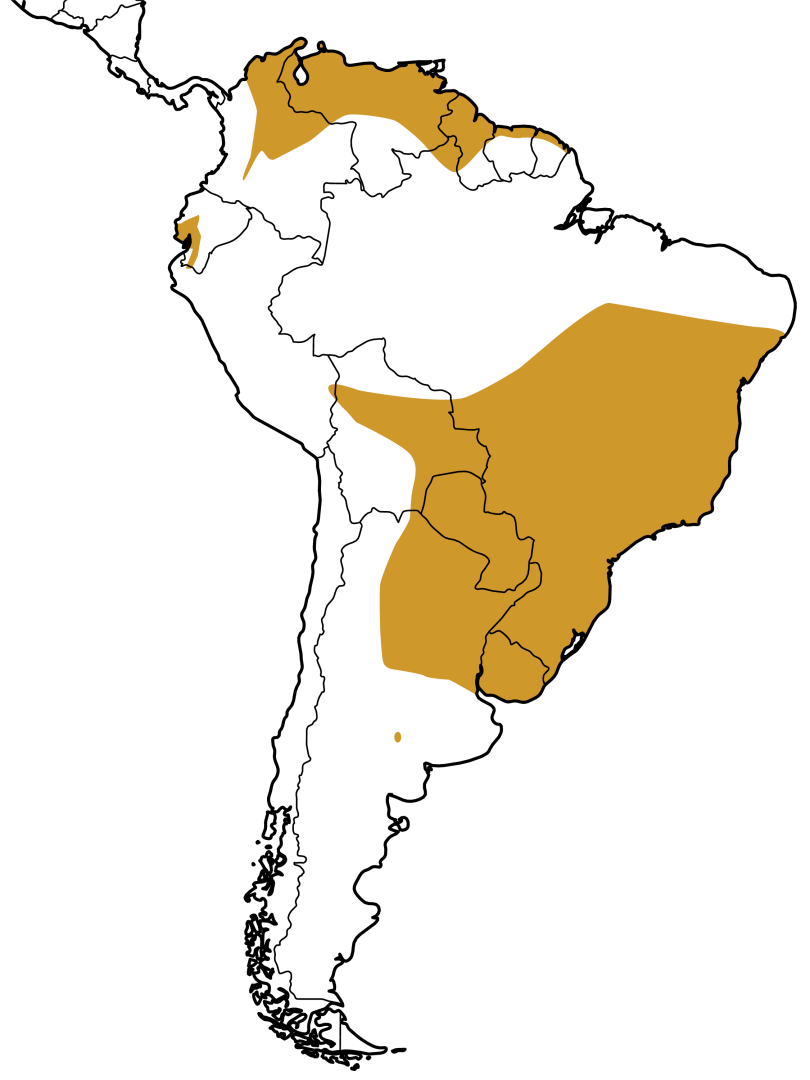

The striped owl is a relatively large, nocturnal species, camouflaged in trees during the day.
335g to 563g
34cm to 42cm
15 years in captivity
Important data
MAIN FEATURES
It has short wings and a long tail, has relatively large, dark brown eyes, and a well-developed tuft above the ears.
TOP THREATS
Kites strings in trees can cause serious injury, and if the string is abrasive it can lead to death. Predatory hunting, being runover, and habitat loss are also a threat to the species.
DIET
Large insects, lizards, birds (such as doves and sparrows), reptiles, small mammals (such as rodents and bats) and snakes.REPRODUCTION
The striped owl lays two to four eggs. The female incubates these eggs for about 30 days and during this period is fed by the male. Most of the time, only two chicks survive, as they compete for food with each other.BEHAVIOR
● Nests on the ground, in flat areas and covered by low-lying vegetation.
● From time to time nests in trees.
● Active at sunset, hunting at the end of the day and at night.
TRIVIA
The tuft is above its ears. It has the incredible ability to turn its head by more than 270°.
Geographical distribution

EXISTING
Conservation status
LC
LC




